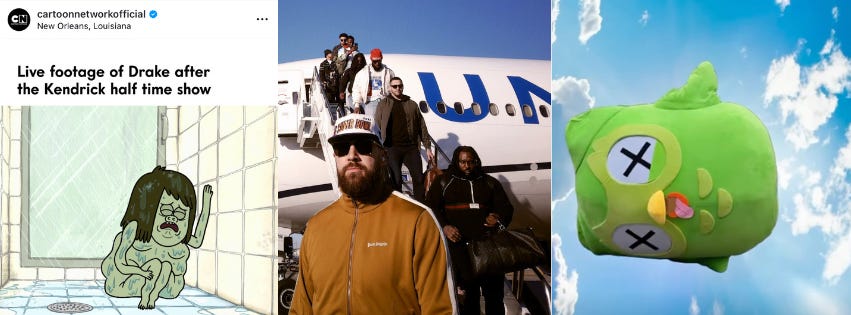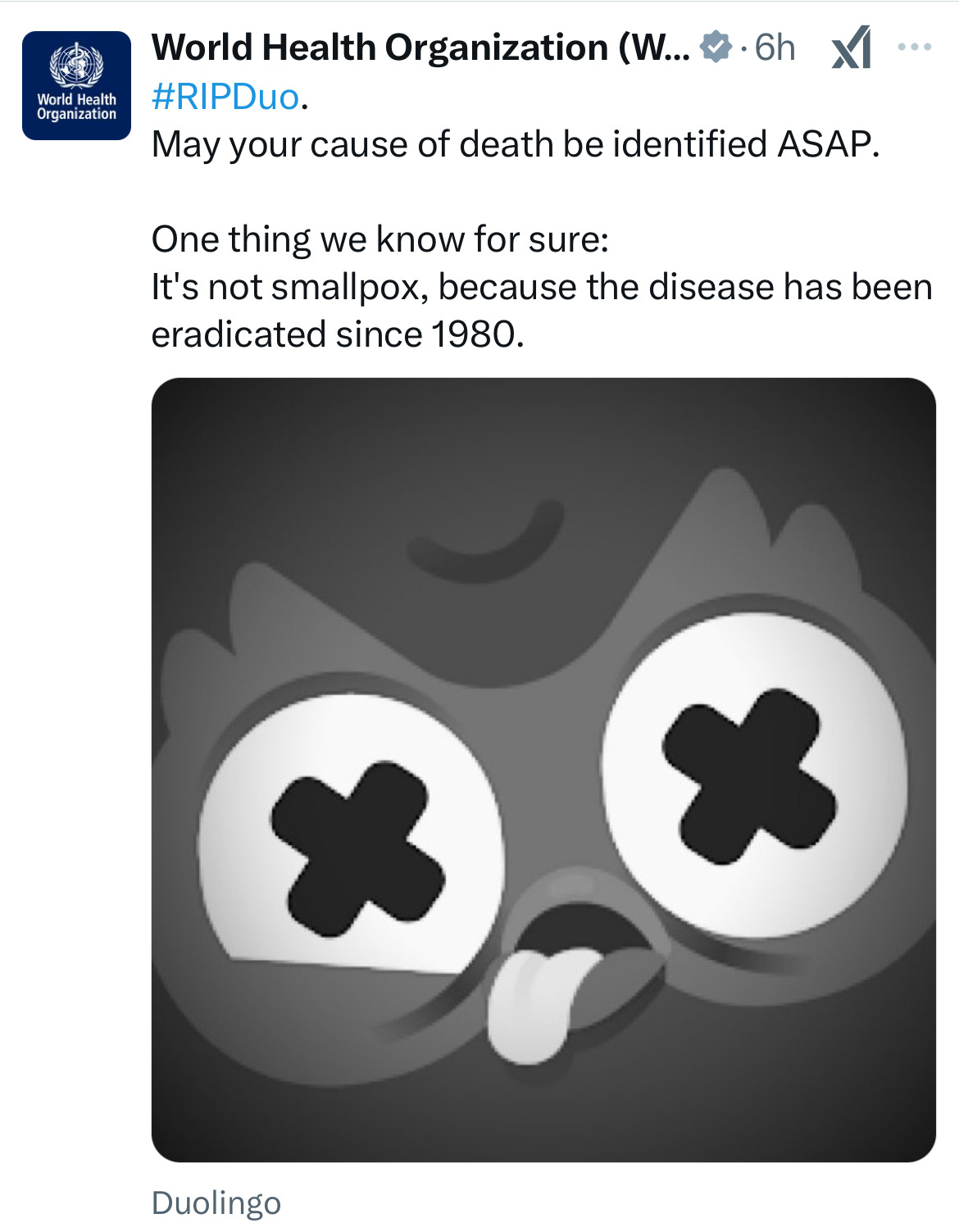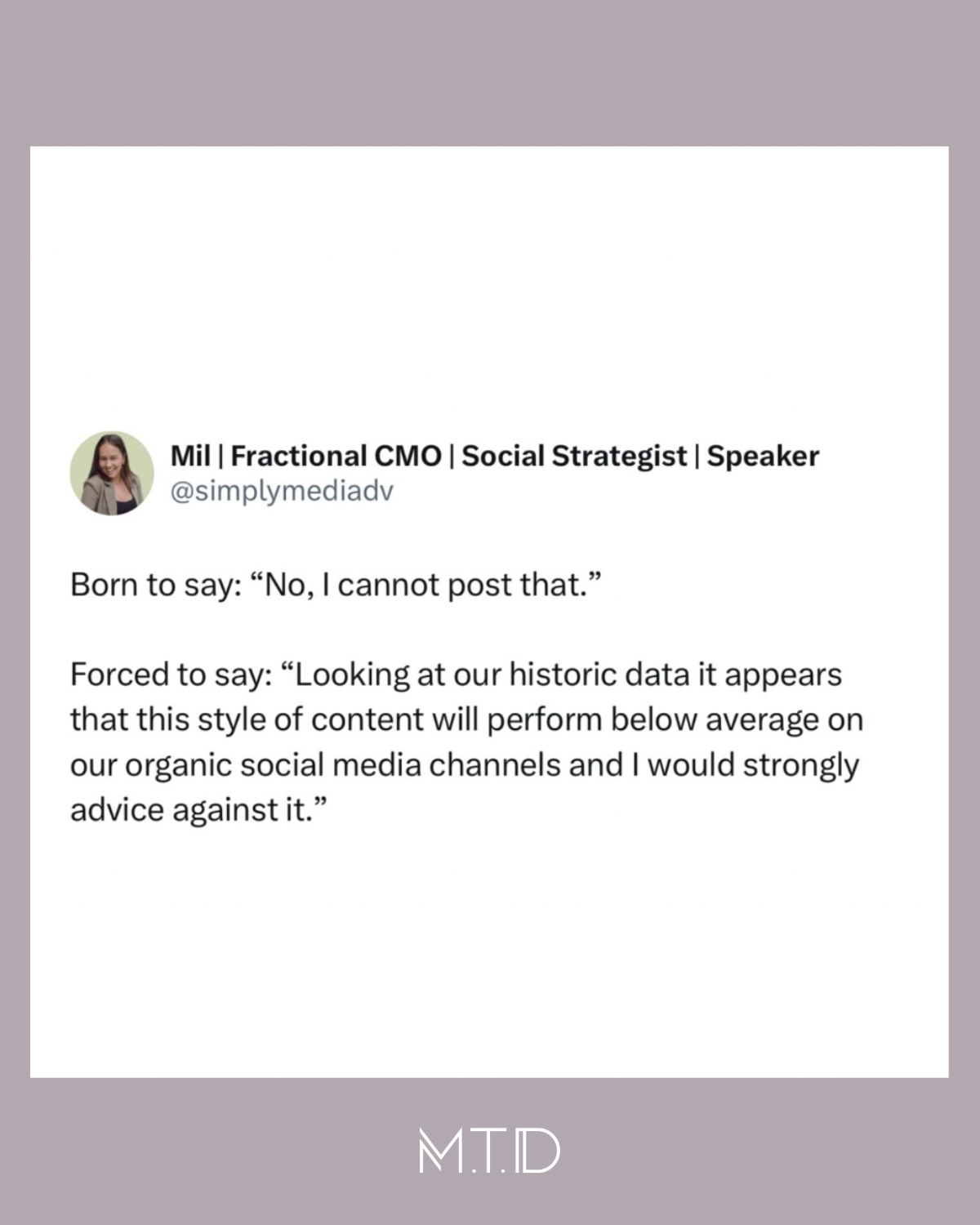quick summary ⚡️
How brands are leveraging cultural moments for their communities
Cultural Gems: Sports brands are using social media trends to reach new, female audiences, TV has surpassed mobile devices as the primary viewing device for YouTube, and more
Reminder to serve up your recommendations with a side of insights
do’s and don’ts of cultural moments [from the brands doing it best]
The world is craving community more than ever, and cultural moments like the Super Bowl and Grammy Awards are proof. These events aren’t just about the games or the performances—they’re about the memes, the chatter, and the feeling that everyone is in on the joke. But here’s the thing: not every brand gets it right.
So, let’s take a closer look at who crushed it, who fumbled, and how you can join the digital conversation without looking like you’re trying too hard.
Our favorite brand tweet might surprise you 👀
Who needs a Super Bowl ad budget when you’ve got ten words and a killer sense of humor? AriZona Iced Tea proved that you don’t need to break the bank to break the internet. Their tweet was simple, but the strategy behind it was brilliant.
David McNamee, the mastermind behind the tweet, shared some valuable insights with our founder,
: “If you have a good product and communicate your message authentically, that will win every time.”AriZona reminded us that being part of the community isn’t about flashy ads; it’s about being real & relatable, and staying true to your brand.
Less surprisingly, Duolingo, the Kings of Chaos [and Content] won again… but maybe not for the reason you think
RIP Duo, the Duolingo Owl. Or... is he? The brand’s social channels were a whirlwind of chaos during the Super Bowl, but what really made them stand out was their ability to keep the conversation going long after the final whistle.
They didn’t just join the conversation—they owned it. From Drake memes to a fake obituary for their beloved owl, Duolingo kept us guessing, laughing, and engaging like crazy. And the best part? They didn’t just talk at us—they talked with us. Fans, brands, and even celebrities [hey Dua Lipa] joined in, turning their content into a full-blown community event.
Duolingo’s secret? They know how to keep the afterparty alive. Because the real magic happens after the moment ends.
United Airlines won a top spot for their speed and levity [probably not what they’re traditionally known for]
United Airlines? Funny? Believe it. During the Super Bowl halftime show, they dropped a clip that was so relatable, it went viral almost instantly.
They didn’t just jump on the trend, they made it their own. By tying the filming style of the halftime show to a universal traveler experience, they stayed true to their brand while still being part of the conversation.
But here’s the lesson: United didn’t just post for the sake of posting. They thought about their audience, their brand, and how they could jump on the moment while tying it back to who they are. Who hasn’t been in this situation at the airport!?
Jumping on trends: a cautionary tale
Not every brand can be a winner. Some hopped on the Super Bowl bandwagon without thinking it through, and the internet wasn’t having it. Whether it was brands misunderstanding Kendrick Lamar memes, kids brands making light of the content, or brands [looking at you Target] jumping on the Black History Month train while actively rolling back DEI efforts, fans have been quick to call out corporations for being performative on social.
Our tips: how to join the party (without being that brand)
Being part of the digital community during a national or global event can be intoxicating, but it’s also a responsibility. Here’s how to do it right:
Be Authentic: If your brand isn’t funny, don’t try to be. If you’re not political, don’t pretend to be. Your audience knows when you’re faking it, and they’ll be quick to let you know.
Think Long-Term: The best brands don’t just show up for the big moments, they stick around for the afterparty. Keep the conversation going, even after the event ends.
Know Your Audience: Not every trend is for you. Before you jump in, ask yourself: Does this make sense for my brand? Will my audience actually care? Or am I just chasing clout? Because if you’re not careful, you might end up on the wrong side of a meme.
💎cultural gems💎
The monocultural moments and news that caught our attention this week:
🏈 THE TIKTOKIFICATION OF SPORTS, icymi podcast
“Everything from fancams to fashion is giving audiences new entry points to a typically masculine space.”
📱 BUZZFEED’S NEW PLAN: AN AI-POWERED SOCIAL MEDIA PLATFORM TO HELP “SPREAD-JOY,” the hollywood reporter
“[Jonah] Peretti [BuzzFeed Inc. head] calls out social platforms for prioritizing what he describes as content with exaggerated stakes that manufacture anger and provoke fear, among other negative emotions, in order to retain user attention.”
📺 YOUTUBE SURPRISE: CEO SAYS TV OVERTAKES MOBILE AS “PRIMARY DEVICE” FOR VIEWING, the hollywood reporter
“From elections to the Olympics to Coachella to the Super Bowl and the Cricket World Cup, the world’s biggest moments play out on YouTube.”
💬 MEET THE REDDITORS WHO SPEND HOURS SNARKING ON INFLUENCERS, the cut
“You look to the influencers who are like, “Day in my life: I just did Pilates and went to a happy hour and got 30 boxes of PR for free.” You’re just like, This sucks. I wonder if people feel the same way, or am I just a hater?”
iykyk
It’s all about how you present it 📊
Recommendations 🤝 data










